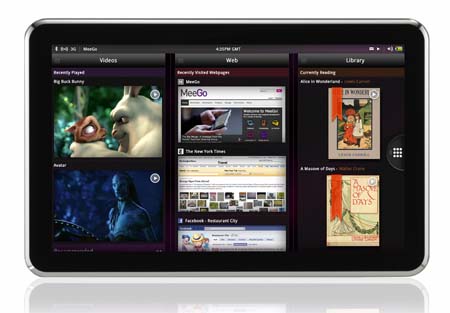Computex 2010: Intel announces dual-core for netbooks, Oak Trail for tablets

With a series of Atom announcements here at Computex in Taiwan earlier today, Intel showed it has big plans for its littlest processor. The company said it would add more powerful dual-core Atoms to its netbook platform sooner than planned. And, as expected, Intel announced a next-generation Atom platform, code-named Oak Trail, designed specifically for tablets and extremely thin netbooks that will first show up early next year.
Intel has been shipping dual-core Atoms for entry-level desktops (a category that used to be called nettops) for some time, but until now it has resisted putting the more powerful chips in netbooks. Netbooks based on the new Pine Trail processors, with two cores and four threads, will offer better overall performance and support 720p video playback. In his keynote address, Intel Executive Vice President Dadi Perlmutter showed a side-by-side demonstration of browsing Web sites with a current single-core netbook versus a dual-core version. Not surprisingly the dual-core was clearly faster, scrolling steadily through graphics-intensive pages and playing back video with no trouble. These dual-core mobile Atom processors are in production now and netbooks based on them will be available during the holidays.
But the big story at Computex this year is tablets. In a separate press conference, Intel's Mooly Eden described Oak Trail as "special silicon" designed specifically for this emerging category. It will include a low-power Atom processor and low-power hub. In comparison with the current Atom platform, Oak Trail will use less power (longer battery life), require only about half the physical footprint and support 1080p video playback. Eden said that Intel has been working with Microsoft to improve the experience with Windows 7 on tablets, but Oak Trail is also designed for MeeGo, which is jointly developed by Intel and Nokia, and Google's Android and Chrome operating systems.
Intel showed prototypes of tablets from numerous manufactures such as Asus, Compal, LG Electronics, MSI, Quanta and others. Most of these currently use Moorestown handheld platform, but they are likely to come to market with Oak Trail. The MeeGo interface, with its Panel and Application views, and the ExoPC Slate and Claystone custom user interfaces on top of Windows--much like HTC's Sense UI on top of Windows Mobile smartphones--were interesting.
Intel faces lots of competition in this market. Tablets based on Oak Trail won't be ready until early 2011. Meanwhile Apple said it has sold more than 2 million iPads and other chipmakers such as Nvidia, Qualcomm, Samsung and Marvell are working on ARM-based processors for tablets.
Intel made several other announcements related to Atom. First, it said that both Acer and Asus have committed to shipping unspecified mobile devices running MeeGo. Asus will also ship netbooks, initially with Windows 7 and later with MeeGo, with Intel's app store, known as AppUp Center, client pre-installed. Intel also announced four new Atom processors that support DDR3 memory including the single-core N455 and N475 for netbooks and the single-core D425 and dual-core D525 for entry-level desktops. The N-series processors are available now and the D-series chips will be available starting June 21.
Ultimately Intel hopes to push Atom not only into netbooks and tablets, but all sorts of gadgets. To illustrate this, during his keynote Perlmutter demonstrated the Aava smartphone prototype based on Moorestown Z-series processor and Android, the Smart TV concept based on the CE-series TV SoC as well as technology from Google and Sony, and the Tunnel Creek SoC for embedded applications, which is now in 3,000 different designs from in-vehicle entertainment to digital signage. "Atom is and will be touching every aspect of our lives," Perlmutter said.
